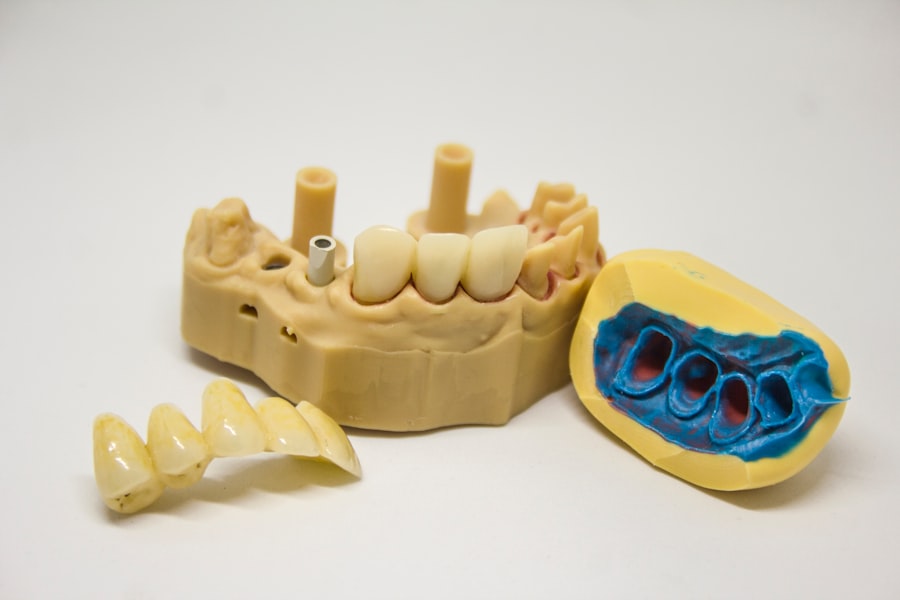Amalgam fillings, commonly used in dentistry for over a century, are composed of a mixture of metals, including mercury, silver, tin, and copper. While they have been praised for their durability and cost-effectiveness, growing concerns about the potential health risks associated with mercury exposure have led to increased scrutiny. Mercury is a neurotoxin that can adversely affect the nervous system, kidneys, and immune system.
Studies have shown that even small amounts of mercury can accumulate in the body over time, leading to various health issues. This has prompted many individuals to reconsider the safety of amalgam fillings, especially in light of alternative materials that do not contain mercury. Moreover, the potential dangers of amalgam fillings extend beyond individual health concerns.
Environmental implications arise from the disposal of dental amalgam, which can release mercury into water systems if not properly managed. The World Health Organization has classified mercury as one of the top ten chemicals of major public health concern, emphasizing the need for careful handling and disposal practices. As awareness grows regarding both personal and environmental risks, many patients are seeking to have their amalgam fillings removed in favor of safer alternatives, such as composite resins or glass ionomer cements.
Key Takeaways
- Amalgam fillings can pose health risks due to the presence of mercury, which can potentially leach into the body.
- When choosing a dentist for amalgam removal, it is important to find one who is experienced in safe removal techniques and follows proper protocols.
- Before the removal process, it is important to undergo a thorough evaluation of your overall health and any potential sensitivities or allergies.
- The amalgam removal procedure should be performed with proper protective measures to minimize exposure to mercury vapor and particles.
- After removal, it is common to experience symptoms such as fatigue, headaches, and muscle aches, which can be managed through detoxification and supportive therapies.
Choosing the Right Dentist for Amalgam Removal
Selecting a dentist for amalgam removal is a critical step in ensuring a safe and effective procedure. Not all dental professionals are equally equipped to handle the complexities associated with removing amalgam fillings, particularly due to the potential release of mercury vapors during the process. It is essential to seek out a dentist who specializes in safe amalgam removal techniques and is knowledgeable about the associated risks.
Look for practitioners who have received training in the protocols established by organizations such as the International Academy of Oral Medicine and Toxicology (IAOMT), which emphasizes the importance of minimizing mercury exposure during removal. In addition to specialized training, consider the dentist’s experience and reputation within the community. Reading reviews and testimonials from previous patients can provide insight into their level of expertise and patient care.
A dentist who prioritizes patient education will take the time to explain the procedure, address any concerns, and discuss alternative filling materials. Establishing a good rapport with your dentist is crucial, as it fosters an environment where you feel comfortable discussing your health concerns and preferences regarding treatment options.
Preparing for the Amalgam Removal Process

Preparation for amalgam removal involves both physical and mental readiness. Before undergoing the procedure, it is advisable to schedule a consultation with your chosen dentist to discuss your medical history, any allergies, and specific concerns regarding amalgam fillings. This initial meeting allows you to gain a comprehensive understanding of what to expect during the removal process and helps your dentist tailor their approach to your individual needs.
Additionally, it is essential to inform your dentist about any medications you are currently taking or any underlying health conditions that may affect the procedure. In terms of physical preparation, some dentists recommend detoxification protocols prior to amalgam removal. This may include dietary adjustments, such as increasing antioxidant-rich foods or supplements that support liver function and detoxification pathways.
Staying well-hydrated is also crucial, as it aids in flushing out toxins from the body. Furthermore, consider arranging for someone to accompany you on the day of the procedure, as you may feel fatigued or disoriented afterward due to anxiety or sedation used during the treatment.
The Amalgam Removal Procedure
| Procedure | Metrics |
|---|---|
| Duration | 30 minutes to 2 hours |
| Cost | Varies depending on the dentist and location |
| Number of Appointments | 1-2 appointments |
| Pain Level | Minimal to moderate discomfort |
| Recovery Time | 1-2 days |
The amalgam removal procedure typically involves several steps designed to ensure patient safety and minimize mercury exposure. Upon arrival at the dental office, you will be provided with protective gear, including a mask and goggles, to shield you from potential mercury vapors and debris. The dentist will also use a rubber dam to isolate the tooth being treated, preventing any amalgam particles from entering your mouth or swallowing them inadvertently.
Once adequately prepared, the dentist will begin by carefully removing the amalgam filling using specialized tools. This process may involve drilling or using ultrasonic devices designed to break down the filling while minimizing heat generation and vapor release. Throughout the procedure, suction devices are employed to capture any released particles or vapors immediately.
The dentist may also use water sprays to cool the area and further reduce heat buildup. After the amalgam has been removed, the dentist will clean the cavity thoroughly before placing a new filling material that aligns with your preferences and health considerations.
Managing Post-Removal Symptoms
After undergoing amalgam removal, it is common for patients to experience some post-operative symptoms. These may include mild discomfort or sensitivity in the treated area, swelling of the gums, or even headaches due to anxiety or residual mercury exposure. It is essential to follow your dentist’s post-operative care instructions carefully to promote healing and minimize discomfort.
In addition to pain management, staying hydrated and consuming a balanced diet rich in vitamins and minerals can support your body’s recovery process. Some patients find that incorporating anti-inflammatory foods such as turmeric or ginger into their diet can help alleviate swelling and discomfort.
If symptoms persist or worsen over time, it is crucial to contact your dentist for further evaluation and guidance.
Benefits of Amalgam Removal

The decision to remove amalgam fillings can yield numerous benefits beyond simply alleviating concerns about mercury exposure. Many patients report an overall improvement in their health and well-being following removal. For instance, individuals who have experienced chronic headaches or fatigue often find relief after eliminating sources of mercury from their bodies.
Additionally, removing amalgam fillings can enhance oral health by allowing for more effective treatment of underlying dental issues that may have been masked by deteriorating fillings. Another significant advantage of amalgam removal is the opportunity to replace old fillings with modern materials that offer aesthetic benefits. Composite resins and porcelain fillings can be color-matched to natural teeth, providing a more visually appealing result compared to traditional silver amalgams.
This aesthetic improvement can boost self-confidence and encourage individuals to maintain better oral hygiene practices.
Maintaining Oral Health After Amalgam Removal
Once amalgam fillings have been removed and replaced with safer alternatives, maintaining optimal oral health becomes paramount. Regular dental check-ups are essential for monitoring your overall dental health and ensuring that new fillings remain intact and functional. Your dentist can provide personalized recommendations for oral hygiene practices tailored to your specific needs.
Incorporating a consistent oral care routine is vital for preventing future dental issues. This includes brushing twice daily with fluoride toothpaste, flossing regularly, and using an antibacterial mouthwash to reduce plaque buildup. Additionally, consider adopting a diet low in sugar and high in nutrients that support dental health, such as calcium-rich foods for strong teeth and vitamin C for healthy gums.
Staying informed about emerging dental technologies and materials can also empower you to make informed decisions about your oral health moving forward.
Sharing Your Amalgam Removal Experience with Others
Sharing your experience with amalgam removal can be beneficial not only for yourself but also for others who may be contemplating similar procedures. By discussing your journey—whether through social media platforms, community forums, or local support groups—you can raise awareness about the potential risks associated with amalgam fillings and promote safer alternatives. Personal stories often resonate with others who may be struggling with similar concerns or health issues related to dental materials.
Moreover, engaging in conversations about amalgam removal can foster a sense of community among individuals seeking support during their dental journeys. By sharing tips on finding qualified dentists or discussing post-removal care strategies, you contribute valuable insights that can help others navigate their own experiences more effectively.
FAQs
What is amalgam removal?
Amalgam removal refers to the process of removing silver amalgam fillings from the teeth. These fillings contain a mixture of metals, including mercury, silver, tin, and copper.
Why do people choose to have their amalgam fillings removed?
Some people choose to have their amalgam fillings removed due to concerns about the potential health risks associated with mercury exposure. Others may have aesthetic concerns or prefer alternative filling materials.
What are the potential health risks associated with amalgam fillings?
There is ongoing debate and research regarding the potential health risks of mercury exposure from amalgam fillings. Some studies suggest that low levels of mercury vapor may be released from amalgam fillings and absorbed by the body, although the health implications of this are still a topic of scientific discussion.
How is amalgam removal performed?
Amalgam removal is typically performed by a dentist who has been trained in safe removal techniques. The process involves isolating the tooth to prevent ingestion or inhalation of mercury particles, using a high-volume suction to remove particles, and replacing the amalgam filling with an alternative material.
How can amalgam removal change someone’s life?
Some individuals report feeling a sense of relief and improved well-being after having their amalgam fillings removed. This may be due to addressing concerns about potential mercury exposure or simply feeling more confident about their dental health and appearance.

